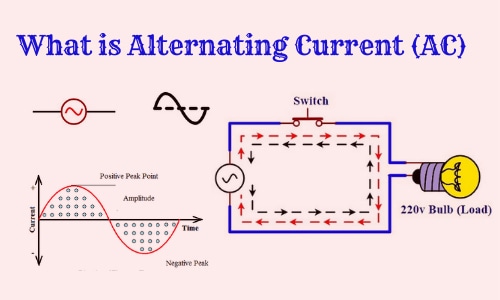What is Alternating Current or AC Current
Hello friends! Welcome back to ElectroDuino. This blog is based on AC Current or Alternating Current. Here we will discuss What is AC Current or Alternating, Symbol, Waveform/Graph, Sources, AC Circuit, How its Works, and Use.
What is Alternating Current or AC Current
Definition: The alternating current is one type of Electric current that changes its magnitude and polarity at regular intervals of time (periodically).
When the load Resistor (R) is connected to an alternating current source, then the current start flowing through it. At first the current flows in one direction, then it flows in the opposite direction, it happens periodically. It means the polarity of the current source always changes at regular intervals of time. The figure is shown below.
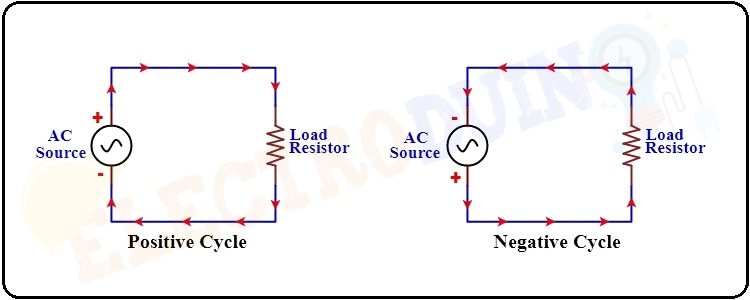
In other words, we can say that Alternating current is the flow of Electric charge (Electrons) through a conductor which changes direction periodically. Since the current flow changes the direction periodically, therefore the voltage polarity also changes with it. It means the high potential (+) and low potential (-) swaps together. When an alternating current passes through a conductor, the electrons of the conductor first flow in one direction, then it flows in the opposite direction, this happens periodically.
For example, the mains line voltage supply of INDIA is about 230 volts, it has a frequency of 50Hz, which means the current changes direction 50 times a second.
AC Current Symbol
The Alternating current changes its direction periodically. Therefore, the sinusoidal waveform (~) sign is used as a symbol of the AC current. The below figure shows the symbol of AC current and DC current and shows differences between them.
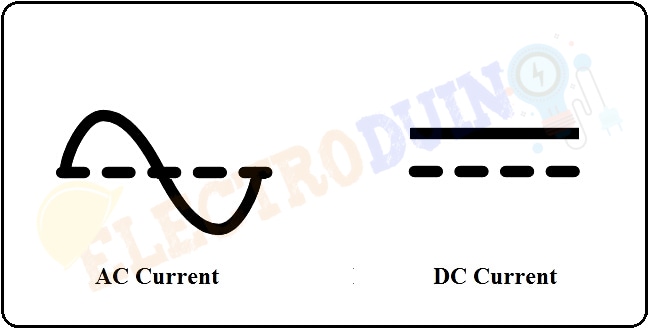
Alternating Current Waveform (Characteristic Graph)
The amplitude of the alternating current/voltage varies continuously according to the time period, which can be represented by a waveform.
The wave shape or waveform is a graph that represents the amplitude change of an alternating current/voltage with respect to the time period, where the amplitude of alternating current and voltage is taken along the y-axis of the graph and the time period taken along the x-axis. The amplitude of the alternating current/voltage oscillates between its maximum peak point and its minimum peak point along with a common reference point. There are different types of waveform, which can represent the AC current and voltage, like sinusoidel wave, square wave, triangular wave, sawtooth wave. The figure is shown below.

But the most common waveform of AC is the sine wave. Here we will explain the Sinusoidal Waveform. At first the current moves in one direction and then it moves in the opposite direction, the direction changes periodically, that’s happened because the flow of electrons changes its direction periodically. That’s why, we see variations in the waveform of alternating current or voltage, which continuously vary between positive and negative.
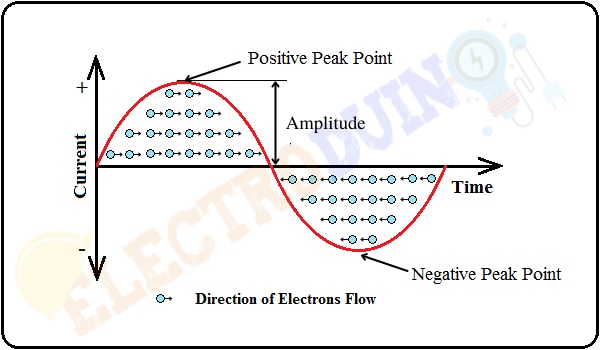
The alternating current (AC) starts from zero, then it grows up to the maximum point in the positive direction, this point is known as the positive peak point. This positive peak point of the sinusoidal waveform represents the maximum forward current or voltage. After reaching the positive peak point, again it starts decreasing to zero. After reaching zero, the current again starts increasing in the reverse direction (negative direction) and grows up to the maximum point in the negative direction, this point is known as the negative peak point and then returns to zero once again. Likewise, the amplitude of the current varies continuously with respect to time.
Alternating Current Sources
The most common example of the alternating current source is an AC generator. It is an electric device that converts mechanical energy into alternating current (AC). Other examples of alternating current (AC) sources are hydroelectric power plants, thermal power generators, nuclear power generators.
Symbol of AC Current/Voltage Source
The main characteristic of AC current, the direction of current flow is changed periodically. That’s why, despite having two terminals of AC voltage/current source, it has no fixed polarity. The polarity of the AC current/voltage source always changing (positive or negative) at regular intervals of time. Unlike the DC voltage source, the AC voltage source has no positive and negative signs at its terminal. And the alternating current is mainly represented by a sine wave.
So the alternating current source symbol is represented by a small sine wave with a circle surrounding it, as shown in the below figure.
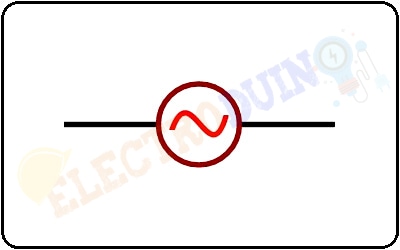
AC circuits and How Current Works in a Circuit
The minimum components required to construct an AC circuit are AC voltage/current source, on/off switch, and a Load (220v bulb). The alternating current circuit figure is shown below
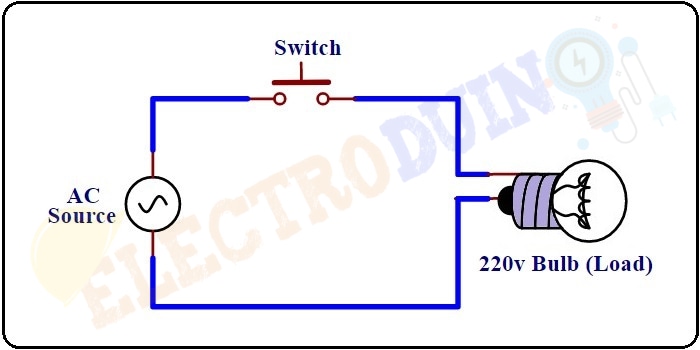
- Let us assume that initially the switch is turned off. This means that there is no continuous path (path is open) for current (electrons) to flow in this circuit. So, in this condition, the circuit act as an open circuit, and no current (electrons) flows through the 220V bulb. As a result, the bulb is in turn off state.
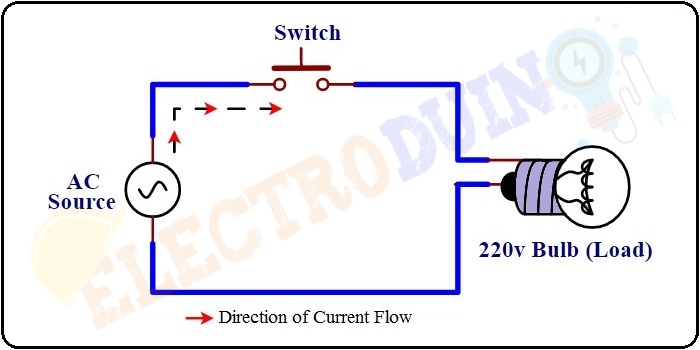
- When we turn on the switch, then the circuit has no open path (the path is continuous). So, the circuit act as a closed circuit, and the current starts flowing through the bulb (load). As a result, the 220v bulb gets some energy and starts glowing. When the current (electrons) flowing through the circuit will change its direction periodically. During the positive half cycle, the current flows in one direction and it changes direction during the negative half cycle, this happens continuously.
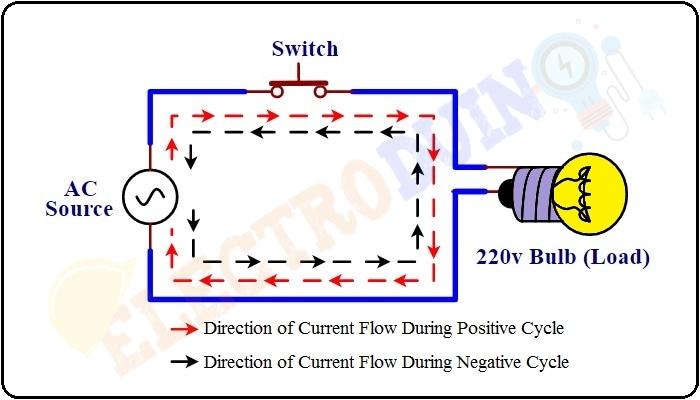
One question can arrive in our mind, although the electric current continuously changes its direction but why the electric bulb is not turn off. Because the direction change of the electric current (flow of electrons) flow happens so fast that the light bulb does not have time to turn off.

